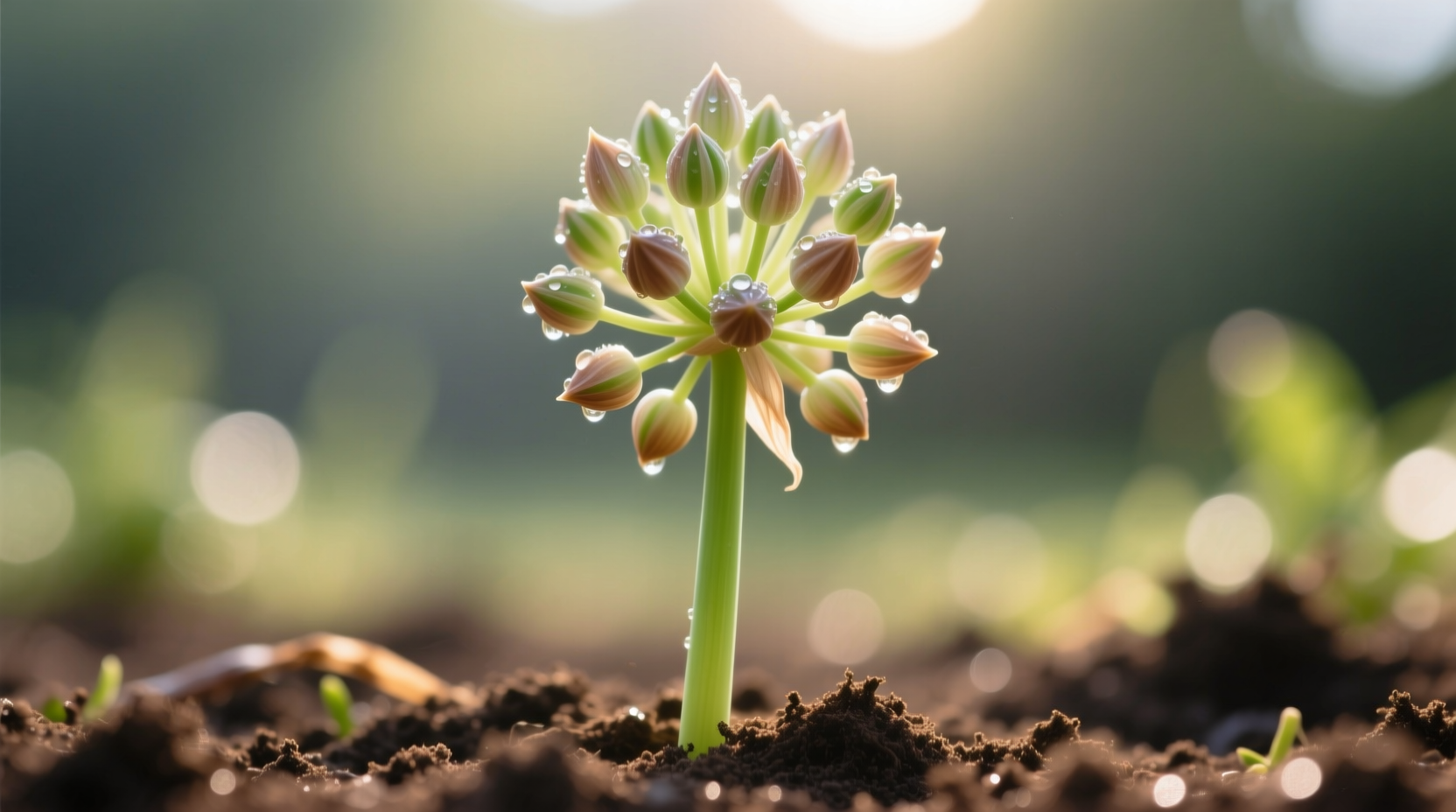When you're searching for what is blue onion information, you're likely encountering confusion between several onion varieties. The term "blue onion" primarily refers to Egyptian walking onions, not a blue-colored onion variety. These hardy perennials have been cultivated for centuries across temperate regions and offer home gardeners a reliable, low-maintenance onion source that returns year after year.
Understanding Blue Onion Varieties
Despite the name, blue onions don't actually have blue bulbs. The "blue" designation comes from their distinctive bluish-green foliage that appears slightly purple-tinged in certain lighting conditions. This visual characteristic helps distinguish them from common yellow or red onion varieties.
Many gardeners and chefs confuse blue onions with shallots, which sometimes have grayish-blue skins in certain varieties. However, Egyptian walking onions (Allium proliferum) represent the true "blue onion" in horticultural terms, with documented cultivation dating back to ancient Egypt according to agricultural records from the USDA National Plant Germplasm System.

Blue Onion Characteristics Compared to Common Varieties
| Characteristic | Blue Onion (Egyptian Walking) | Yellow Onion | Shallot |
|---|---|---|---|
| Flavor Profile | Strong, pungent, slightly sharper | Moderate sweetness when cooked | Mild, delicate, slightly garlicky |
| Growth Habit | Perennial, produces aerial bulblets | Annual, single bulb | Annual, clustered bulbs |
| Hardiness Zone | 3-10 (extremely cold tolerant) | Varies by variety | 6-9 |
| Storage Life | 6-8 months when properly stored | 4-6 months | 4-5 months |
| Primary Use | Cooking, pickling, garden propagation | General cooking, caramelizing | Delicate sauces, dressings |
Historical Journey of Blue Onions
Egyptian walking onions have traveled an impressive path through culinary history. Archaeological evidence from the USDA Agricultural Research Service shows onion cultivation in ancient Egypt dating back to 3200 BCE, with varieties resembling modern walking onions appearing in Mediterranean regions by the first century CE.
The "walking" characteristic—where top bulblets grow heavy, bend the stalk to the ground, and take root—earned these onions their distinctive name. By the 16th century, European settlers had introduced them to North America, where they became staples in colonial kitchen gardens due to their remarkable hardiness and self-propagating nature.
Practical Growing Guide for Home Gardeners
One of the most compelling aspects of growing blue onions is their remarkable ease of cultivation. Unlike annual onion varieties that require replanting each season, Egyptian walking onions establish permanent patches with minimal intervention.
Planting tips:
- Plant sets 1-2 inches deep in early spring or fall
- Space 6-8 inches apart in well-draining soil
- Requires full sun but tolerates partial shade
- Water regularly during establishment, then becomes drought-tolerant
Within two growing seasons, your initial planting will expand into a self-sustaining colony. The key to managing blue onion propagation is harvesting the aerial bulblets before they become too heavy and "walk" beyond your intended growing area.
Culinary Applications and Flavor Management
The robust flavor of blue onions makes them particularly valuable in specific culinary applications. Their pungency holds up well during cooking, making them excellent for:
- Hearty stews and soups where flavor penetration matters
- Pickling projects that benefit from strong onion presence
- Rustic breads and savory pastries
- Grilled vegetable medleys
When working with blue onion flavor profile, remember that their intensity means you'll typically use less than you would with yellow onions. For raw applications like salads or salsas, consider soaking sliced blue onions in ice water for 15-20 minutes to mellow their sharpness while preserving their distinctive flavor notes.
When Blue Onions Shine (and When to Choose Alternatives)
Understanding the context boundaries for blue onion usage helps maximize their culinary potential. These onions excel in applications where:
- You need persistent onion flavor through long cooking times
- Garden sustainability is a priority (perennial nature)
- Stronger onion presence enhances the dish
Consider alternatives when:
- Delicate flavor balance is crucial (opt for shallots)
- You need sweet caramelization (yellow onions work better)
- Raw applications require milder bite (sweet onions preferred)
Storage Techniques for Maximum Longevity
Proper storage significantly extends the usability of your blue onion harvest. Follow these evidence-based methods from university agricultural extensions:
- Cure onions for 2-3 weeks in a dry, well-ventilated area
- Trim roots to 1/4 inch and tops to 1 inch after curing
- Store in mesh bags or braided bundles
- Maintain temperature between 32-40°F (0-4°C)
- Keep humidity around 65-70% to prevent mold
When stored correctly, blue onions maintain quality for 6-8 months—significantly longer than many annual onion varieties. The University of Minnesota Extension confirms that properly cured Egyptian walking onions demonstrate superior storage characteristics compared to standard bulb onions.
Finding and Selecting Quality Blue Onions
If you're searching for where to buy blue onions, check these reliable sources:
- Specialty seed catalogs (look for "Egyptian walking onion")
- Local farmers markets (ask about perennial allium varieties)
- Online gardening retailers with heirloom selections
- Local gardening clubs or seed exchanges
When selecting plants or sets, look for firm bulbs without soft spots, vibrant bluish-green foliage, and no signs of mold or disease. Healthy blue onion plants should feel substantial for their size with crisp, unwilted leaves.











 浙公网安备
33010002000092号
浙公网安备
33010002000092号 浙B2-20120091-4
浙B2-20120091-4